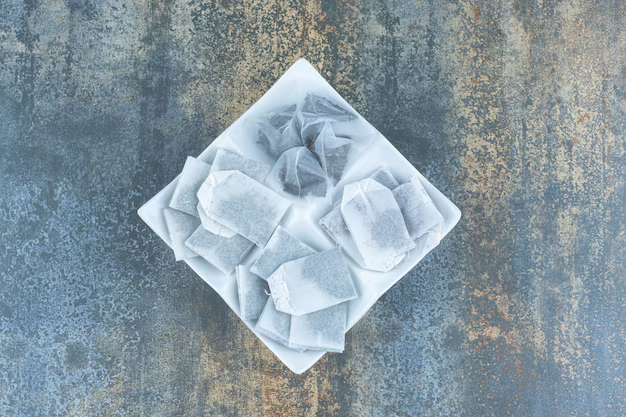How Quickly Can a New Refrigerator Start Making Ice?
There’s no denying the simple joy of refreshing ice cubes clinking in a glass. Yet, with a new refrigerator, that luxury can feel a bit anticipatory as you wait for ice production to kick in. Understanding how long it typically takes for a new fridge to begin its ice-making magic can help manage expectations and make your experience smoother. In this article, we’ll delve into those timelines, explore what influences them, and offer practical tips to maximize ice-making efficiency.
🤔 Why Does Ice Creation Take Time in a New Refrigerator?
When a new refrigerator arrives, it’s essentially a dormant appliance that needs time to wake up and stabilize. Several factors play a role in how quickly it can start the ice-making process:
1. Initial Setup and Stabilization
Upon delivery, a refrigerator requires a specific period to stabilize, as jostling during transit can affect its components. Generally, it takes around 12 to 24 hours for the appliance to settle and reach optimal operational temperatures. During this time:
- The cooling system adjusts to the set conditions.
- Internal temperatures synchronize, ensuring both fresh food and freezer compartments are at their designated settings.
2. Internal Temperature Achievement
For ice-making to commence, the freezer temperature needs to dip below freezing. This generally targets around 0°F (-18°C). Achieving this temperature relies on:
- Proper door sealing to prevent warm air infiltration.
- Adequate space around the fridge for ventilation, helping dissipate heat effectively.
🕒 Realistic Ice-Making Timelines
3. First Batch Expectations
Typically, once a refrigerator has fully stabilized and achieved necessary cooling levels, the first batch of ice might be produced anywhere from 6 to 12 hours post initial startup. However, reaching full capacity and potential might take longer.
4. Subsequent Cycles
After the initial batch, a modern fridge can produce ice approximately every 90 minutes to 2 hours. Yet, the output and efficiency vary depending on the model and environmental conditions.
Influencing Factors for Ice Production
Understanding what impacts ice-making speed can empower you to optimize the process. Here are some elements to consider:
5. Freezer Compartment Organization
- Avoid Overloading: Ensure that the freezer isn’t packed too tightly. Proper air circulation is crucial for maintaining uniform coldness essential for efficient ice-making.
- Allow Space for Airflow: Strategically place items to allow unrestricted paths for cool air.
6. Ice Maker Settings
- Ensure it's On: Sometimes the ice maker might be accidentally turned off. Ensure that it’s active according to your fridge’s specific controls or settings.
- Adjust Settings: Some refrigerators offer settings to control ice cube size, influencing production speed and capacity.
7. Environmental Conditions
- Ambient Temperature: A higher kitchen or room temperature can slow down ice production. Ensuring proper ventilation around the refrigerator aids efficiency.
- Positioning: Do not place the fridge near heat sources, like ovens or dishwasher outlets, which can raise internal temperatures.
8. Water Supply Connection
- Proper Installation: A well-connected water line is crucial. Ensure there are no kinks or bottlenecks in hoses that could impede water flow to the ice maker.
- Quality Water Supply: Water filtration systems within fridges ensure clean and fast ice-making. Check and replace filters as recommended by the manufacturer.
Practical Tips for Faster Ice Production
Here are some practical steps you can take to enhance ice-making once your new fridge is set up:
9. Optimize Temperature Settings
- Keep the freezer compartment at 0°F (-18°C) consistently.
- Regular use of a thermometer can ensure accuracy, as fridge settings might be inconsistent.
10. Efficient Water Flow
- Regular Filter Check: Ensure water filters are replaced periodically for optimal flow.
- Inspect Water Lines: Ensure that the plumbing connection to your ice maker is unobstructed.
11. Energy-Saving Practices
- Close Door Promptly: Reducing frequently opening fridge doors limits lost cool air, helping maintain internal temperatures.
- Regular Maintenance: Clean condenser coils and check for dust build-up to ensure efficient operation.
Common Concerns and Troubleshooting
Here’s a quick guide to address common issues you may encounter with your refrigerator's ice-making:
12. Why Is My Ice Maker Not Producing Ice?
- Check Electrical Connections: Power supply issues might stop the ice maker from functioning.
- Inspect Ice Maker Switch: Confirm the ice maker switch is in the “on” position.
13. What to Do If Ice Is Slower Than Expected?
- Professional Inspection: If production remains slow despite standard measures, consider having a professional evaluate the appliance.
- Review Environmental Adjustments: Ensure room temperature, fridge placement, and internal organization are optimal.
🍦 Quick Ice Production Tips 🍦
To help solidify your understanding and provide a quick reference, here’s a handy recap of key pointers:
- 🕒 Stabilization Period: Allow 12-24 hours for initial setup.
- ❄️ Maintain Temperatures: Keep the freezer at 0°F (-18°C) for optimal conditions.
- 🚪 Door Management: Reduce open durations to conserve cooling.
- 💧 Water Supply: Ensure clean, smooth water flow; replace filters as needed.
- 🔧 Regular Maintenance: Prioritize coil cleaning and system checks for peak performance.
Final Thought
Navigating the world of appliances can seem daunting, but understanding the intricacies of your new refrigerator's ice-making mechanics can provide immediate rewards. By ensuring proper setup, maintenance, and environmental adjustments, you can maximize your ice production capabilities and enjoy ice-cold refreshments any time you desire. Happy ice-making!
Remember, like any new addition to your kitchen, familiarity and patience go a long way. Whether you’re hosting a summer party or making an everyday meal more refreshing, a well-prepared fridge is your ally in food storage and utility. ✨
